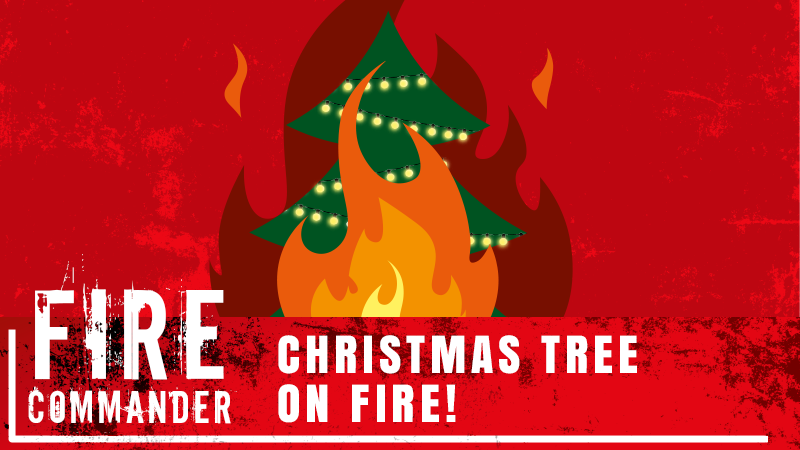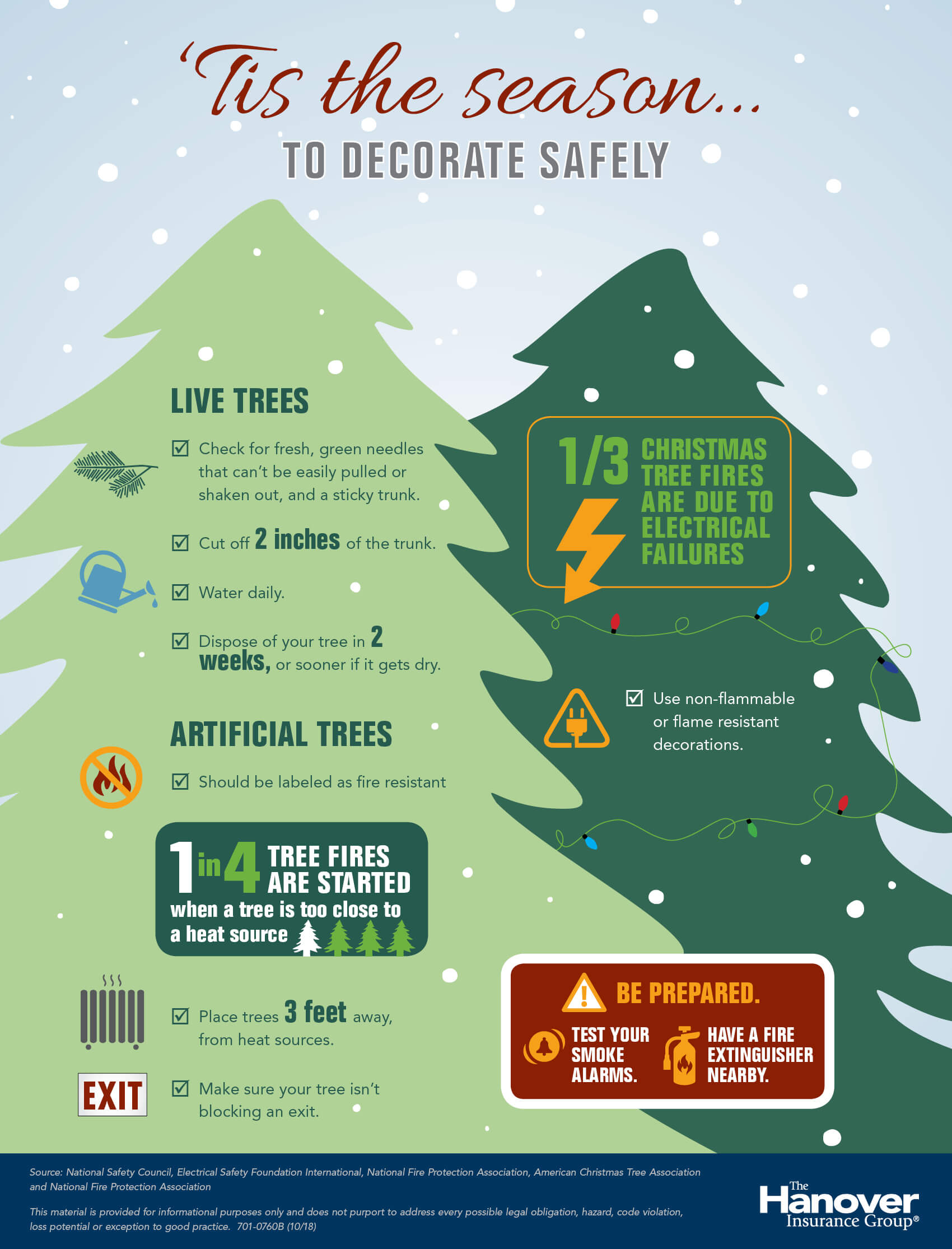
Christmas trees can be a fire hazard, especially if they are not properly cared for. A dry tree, faulty lights, or a misplaced candle can all spark a devastating fire. However, with the right knowledge and preparation, you can reduce the risk of a Christmas tree fire and know how to extinguish it if one does occur.
According to the National Fire Protection Association (NFPA), Christmas trees are responsible for an estimated 200 home fires per year, resulting in an average of six deaths, 16 injuries, and $16 million in property damage. The leading causes of Christmas tree fires are:
- Electrical issues, such as faulty lights or cords
- Heat sources, such as candles or space heaters, too close to the tree
- Dry trees

Here are seven ways to extinguish a Christmas tree fire:
1. Turn Off the Power
If the fire is caused by electrical issues, the first step is to turn off the power to the tree. Unplug the lights and any other electrical decorations. This will help prevent the fire from spreading and reduce the risk of electrical shock.
Using a Fire Extinguisher
If the fire is small and contained, you may be able to extinguish it with a fire extinguisher. Make sure you have a fire extinguisher rated for electrical fires (Class C) and follow the PASS method:
- P - Pull the safety pin or ring to release the lock
- A - Aim the nozzle at the base of the fire
- S - Squeeze the handle to release the extinguishing agent
- S - Sweep the nozzle back and forth, covering the entire area of the fire

2. Use Baking Soda
Baking soda can be used to smother a small fire. Sprinkle baking soda liberally over the area of the fire, making sure to cover it completely. This will help starve the fire of oxygen and prevent it from spreading.
Precautions
When using baking soda to extinguish a fire, make sure to:
- Use a large amount of baking soda to ensure the fire is fully covered
- Avoid using baking soda on electrical fires, as it can conduct electricity
- Keep a safe distance from the fire to avoid inhaling smoke or toxic fumes

3. Use a Fire Blanket
A fire blanket can be used to smother a small fire. Simply place the blanket over the area of the fire, making sure to cover it completely. This will help starve the fire of oxygen and prevent it from spreading.
Types of Fire Blankets
There are two types of fire blankets:
- Fiberglass blankets: These are the most common type of fire blanket and are suitable for most fires.
- Ceramic blankets: These are more expensive than fiberglass blankets but offer better heat resistance and are suitable for high-temperature fires.

4. Use a Garden Hose
If the fire is large or spreading quickly, you may need to use a garden hose to extinguish it. Make sure to:
- Use a hose with a spray nozzle to help distribute the water evenly
- Aim the nozzle at the base of the fire, not at the flames themselves
- Use a gentle stream of water to avoid splashing the fire and spreading it further
Precautions
When using a garden hose to extinguish a fire, make sure to:
- Use caution when approaching the fire, as the water may create a steam explosion
- Avoid using a garden hose on electrical fires, as the water can conduct electricity
- Keep a safe distance from the fire to avoid inhaling smoke or toxic fumes

5. Use a Fire Extinguishing Spray
A fire extinguishing spray can be used to extinguish a small fire. These sprays are designed to smother the fire and prevent it from spreading. Make sure to:
- Use a spray rated for the type of fire you are dealing with (e.g. electrical, grease, etc.)
- Follow the instructions on the label for proper use
- Keep a safe distance from the fire to avoid inhaling smoke or toxic fumes
Types of Fire Extinguishing Sprays
There are several types of fire extinguishing sprays available, including:
- Water-based sprays: These are suitable for most fires and are often less expensive than other types of sprays.
- Foam-based sprays: These are suitable for grease and oil fires and can help to smother the fire.
- Dry chemical sprays: These are suitable for electrical fires and can help to smother the fire.

6. Use a Fire Extinguisher Rated for Christmas Tree Fires
If you have a fire extinguisher rated for Christmas tree fires (Class A or Class B), you can use it to extinguish the fire. Make sure to:
- Follow the instructions on the label for proper use
- Use the PASS method to ensure the fire is fully extinguished
- Keep a safe distance from the fire to avoid inhaling smoke or toxic fumes
Types of Fire Extinguishers
There are several types of fire extinguishers available, including:
- Water extinguishers: These are suitable for most fires and are often less expensive than other types of extinguishers.
- Foam extinguishers: These are suitable for grease and oil fires and can help to smother the fire.
- Dry chemical extinguishers: These are suitable for electrical fires and can help to smother the fire.

7. Call the Fire Department
If the fire is too large or spreading too quickly to extinguish on your own, call the fire department. They will have the training and equipment to safely extinguish the fire and prevent it from spreading.
Precautions
When calling the fire department, make sure to:
- Provide your address and a brief description of the fire
- Stay on the line and answer any questions the dispatcher may have
- Follow any instructions the dispatcher may give you





What are the most common causes of Christmas tree fires?
+The most common causes of Christmas tree fires are electrical issues, heat sources too close to the tree, and dry trees.
How can I prevent a Christmas tree fire?
+To prevent a Christmas tree fire, make sure to choose a fresh tree, keep it away from heat sources, and use safe lighting and decorations.
What should I do if my Christmas tree catches on fire?
+If your Christmas tree catches on fire, turn off the power to the tree, use a fire extinguisher rated for electrical fires, or call the fire department if the fire is too large or spreading too quickly.
We hope this article has provided you with the information you need to stay safe this holiday season. Remember, prevention is key, and taking a few simple precautions can help prevent a Christmas tree fire. However, if a fire does occur, knowing how to extinguish it quickly and safely can make all the difference.









